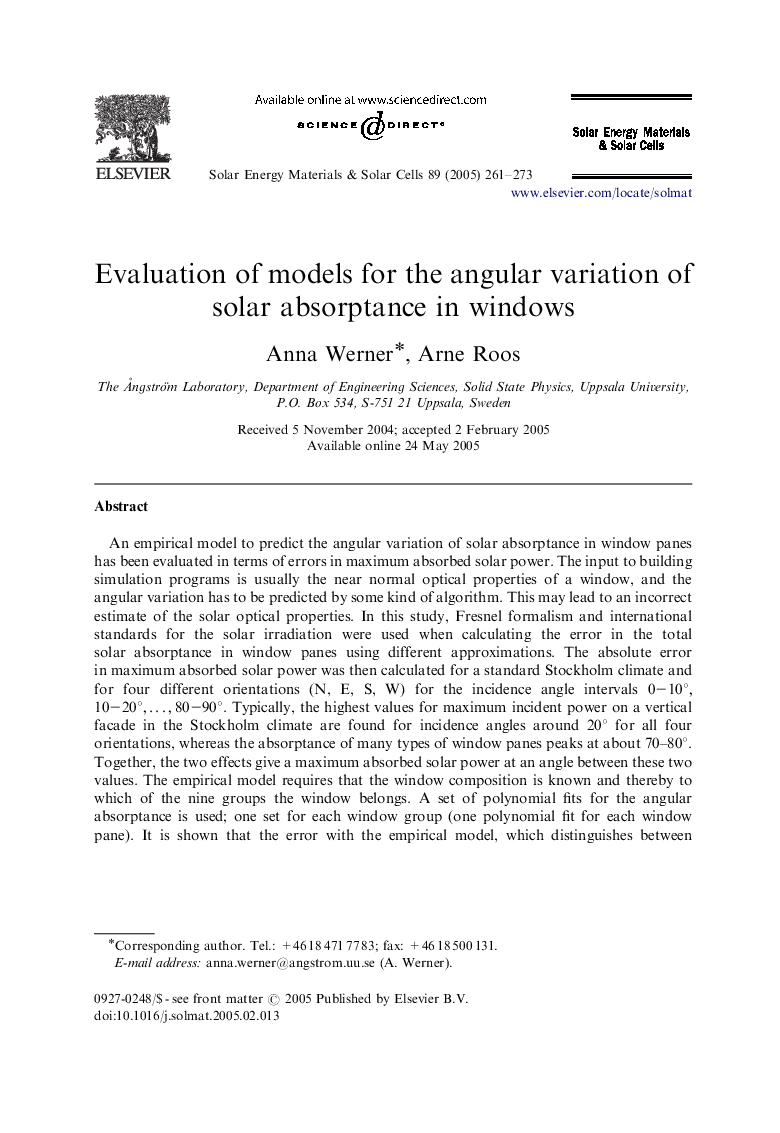| Article ID | Journal | Published Year | Pages | File Type |
|---|---|---|---|---|
| 9618641 | Solar Energy Materials and Solar Cells | 2005 | 13 Pages |
Abstract
An empirical model to predict the angular variation of solar absorptance in window panes has been evaluated in terms of errors in maximum absorbed solar power. The input to building simulation programs is usually the near normal optical properties of a window, and the angular variation has to be predicted by some kind of algorithm. This may lead to an incorrect estimate of the solar optical properties. In this study, Fresnel formalism and international standards for the solar irradiation were used when calculating the error in the total solar absorptance in window panes using different approximations. The absolute error in maximum absorbed solar power was then calculated for a standard Stockholm climate and for four different orientations (N, E, S, W) for the incidence angle intervals 0-10°,10-20°,â¦,80-90°. Typically, the highest values for maximum incident power on a vertical facade in the Stockholm climate are found for incidence angles around 20° for all four orientations, whereas the absorptance of many types of window panes peaks at about 70-80°. Together, the two effects give a maximum absorbed solar power at an angle between these two values. The empirical model requires that the window composition is known and thereby to which of the nine groups the window belongs. A set of polynomial fits for the angular absorptance is used; one set for each window group (one polynomial fit for each window pane). It is shown that the error with the empirical model, which distinguishes between different window configurations, is on average about a factor of ten lower than with two other models where the same approximation is used indiscriminately for all windows.
Keywords
Related Topics
Physical Sciences and Engineering
Chemical Engineering
Catalysis
Authors
Anna Werner, Arne Roos,
